
Aesculus x carnea
red horse chestnut (Aesculus × carnea) Breadcrumb. Home; Campus Tree Story Map; red horse chestnut (Aesculus × carnea) All Section Menuclose. Native: Germany. Tree Characteristics. Drought tolerant; Shape: Rounded or Umbrella; Foliage: Deciduous, Palmately Compound, Dark Green, No Change; Height: 30 - 50 feet.
Dublin Flora Aesculus x carnea 'Briottii'
A rounded tree, with long, dense upright clusters of single, bright red flowers in spring. The flowers are attractive to hummingbirds. Aesculus O'Neill Red
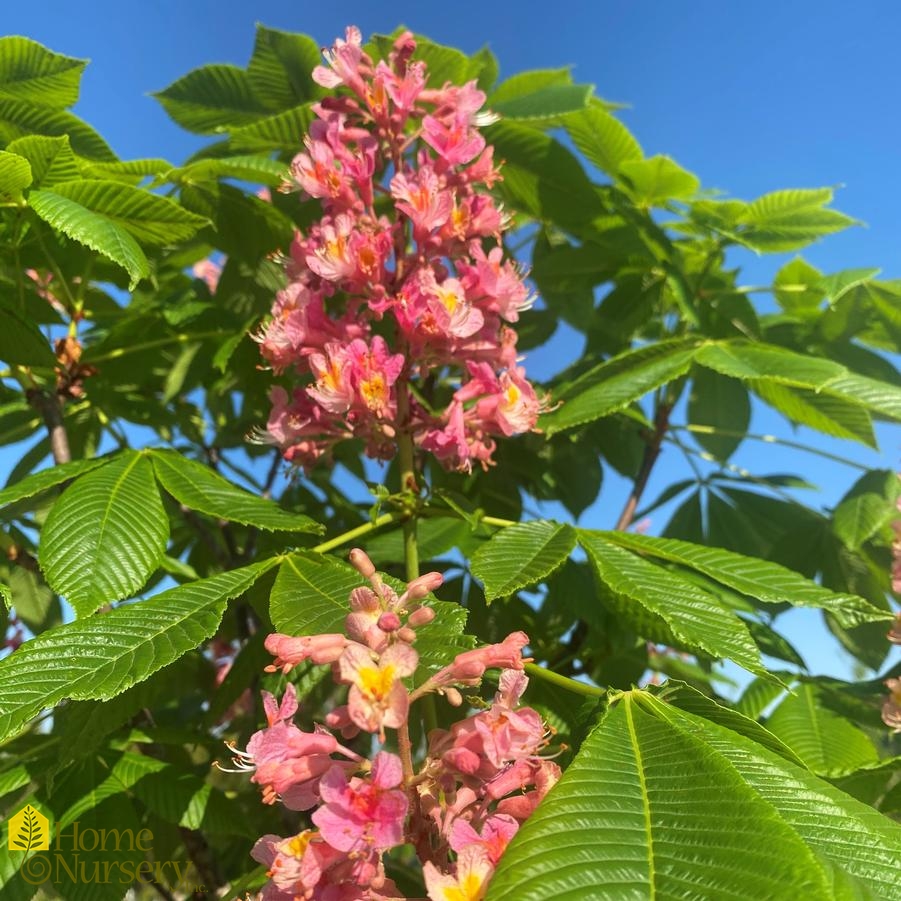
Aesculus x carnea 'Fort McNair' Red Horsechestnut from Home Nursery
Recommended citation 'Aesculus × carnea' from the website Trees and Shrubs Online (treesandshrubsonline. org/ articles/ aesculus/ aesculus-x-carnea/). Accessed 2024-01-08. A tree of rounded form, 30 to 50 ft high in this country, but 60 to 80 ft high on the continent; winter buds slightly resinous. Leaves composed of five or seven leaflets.
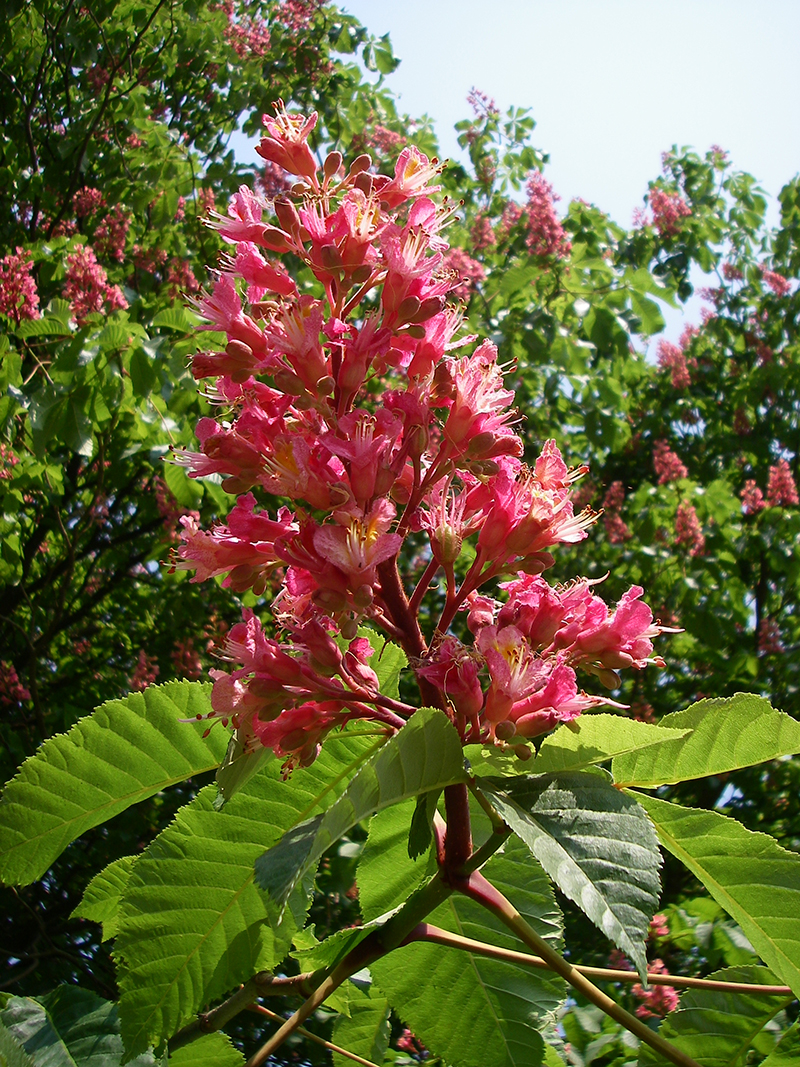
Rotblühende Rosskastanie (Aesculus x carnea) Botanischer Garten Universität Rostock
Fort McNair red horse-chestnut (Aesculus x carnea 'Fort McNair'):. Ruby horse-chestnut (Aesculus x carnea 'Briotii'): At 25 to 30 feet high with the same spread, this cultivar has dark rosy red flowers with yellow throats. The leaves have a red mid-rib. Find on the Map. Spencer Campbell. Plant Clinic Manager.
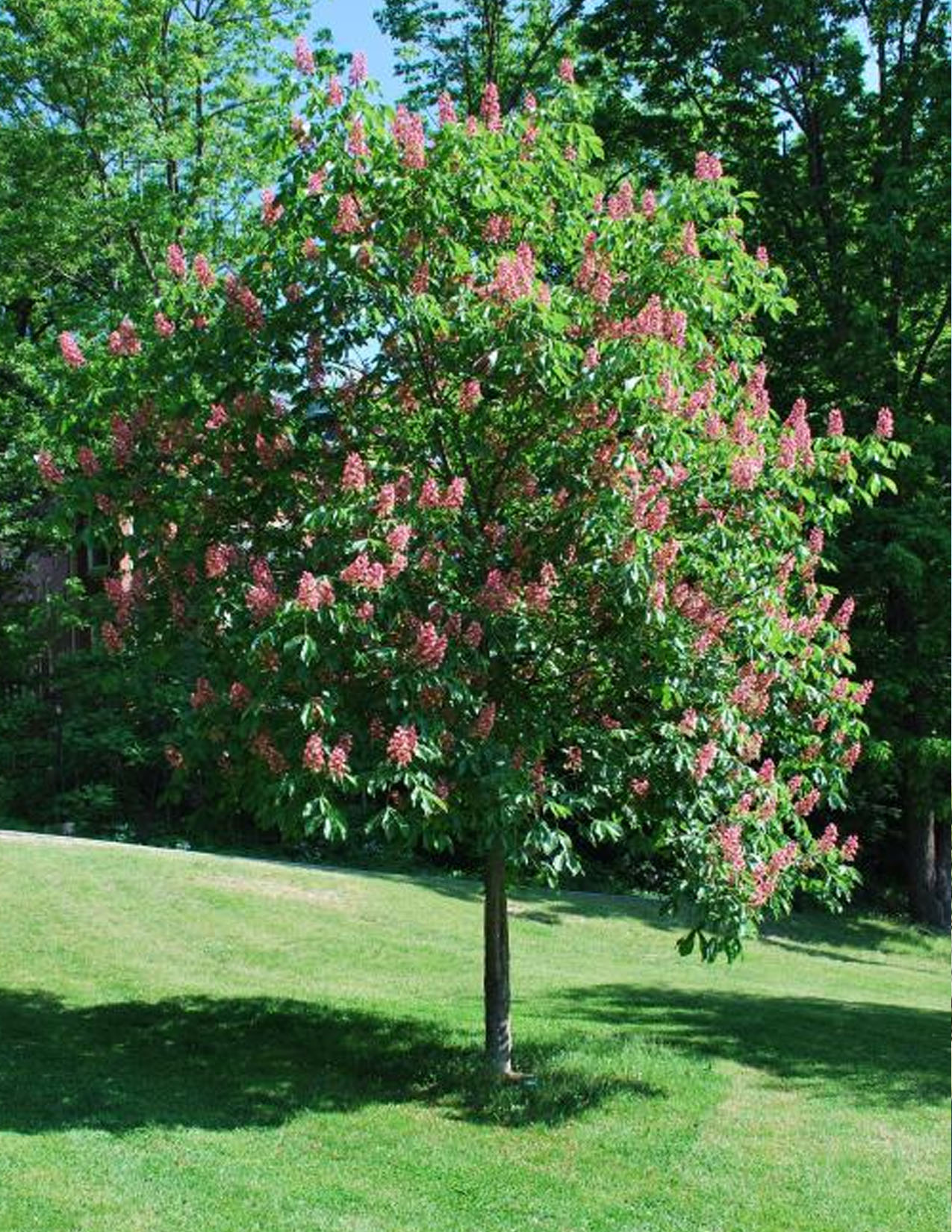
Aesculus x carnea 'Fort McNair'Maronnier à fleurs rouges 'Fort McNair' Les Plantations Létourneau
Aesculus x carnea is a deciduous Tree growing to 25 m (82ft 0in) at a slow rate. See above for USDA hardiness. It is hardy to UK zone 4 and is not frost tender. It is in flower in July, and the seeds ripen in September. The species is hermaphrodite (has both male and female organs) and is pollinated by Bees. Suitable for: light (sandy), medium (loamy) and heavy (clay) soils and prefers well.
FileAesculus x carnea PICT0366.JPG
Tan to brown globose fruit, about 4 cm long, only slightly prickly. Buds not as large or as sticky as those of A. hippocastanum. Sun to light shade. Best on moist, slightly acid soil. Hardy to USDA Zone (4)5 From a cross of A. pavia and A. hippocastanum. Cultivars include 'Briotii', rosy crimson flowers; 'O'Neill Red', bright red single flowers.

Aesculus x carnea
Aesculus x carnea is a hybrid between Aesculus pavia and A. hippocastanum and is regarded to be less susceptible to disease than either of its parents. A beautiful landscape tree for parks and large lawns. It may be planted as a shade tree. Grows up to 30-40 ft. tall and wide (9-12 m). Thrives in average, medium moisture, well-drained soils in.

Aesculus x carnea hestekastanje med rosarøde blomster Park & Anlegg fagbladet for
Aesculus. Species: A. × carnea. Binomial name. Aesculus × carnea. Zeyh. Aesculus × carnea, or red horse-chestnut, [1] is a medium-sized tree, an artificial hybrid between A. pavia (red buckeye) and A. hippocastanum (horse-chestnut). Its origin uncertain, probably appearing in Germany before 1820. It is a popular tree in large gardens and parks.

Aesculus x carnea Red Horsechesnut Zone 4 H 40' W 30' Horse chestnut trees, Red
Scientific name: Aesculus x carnea Common name: red horse chestnut Native: No Native range: Red horse chestnut is a cultivated hybrid of A. hippocastanum (native to the Balkans) and A. pavia (native to North America) [1,4].It has been planted in urban settings across the United States [1,2].Distribution in North America: Click to view the USDA Plants Database page for A. x carnea.
.jpg)
FileAesculus x carnea cv. Briotti (Red Horsechestnut).jpg
Broadleaf deciduous tree, slow growing to 35ft high and 25 ft wide (11 × 7.6 m), broad-rounded. Long clusters (25-30 cm) of single, bright red flowers. Hardy to USDA Zone (4)5 Introduced by Monrovia nursery in about 1979 (Jacobson,1996). Monrovia spells the cultivar name as O'Neill; many variations of this name are found in nursery catalogs.
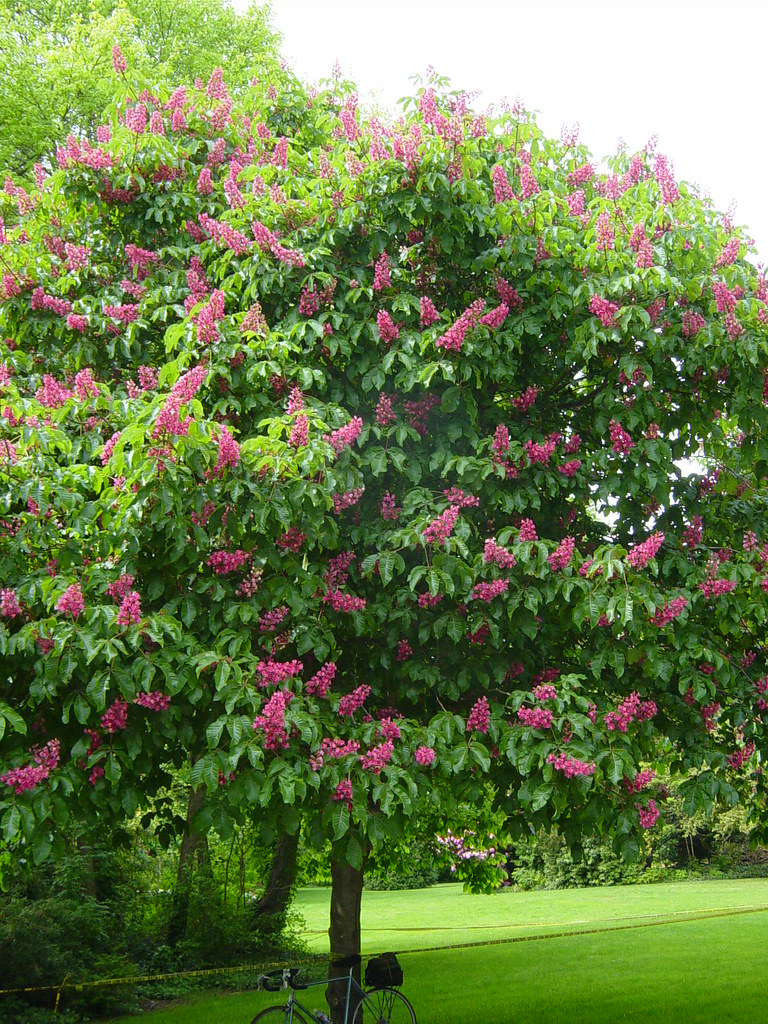
Aesculus x carnea 'Briotii' Red Horsechestnut WBLA_Corky Flickr
The Fort McNair Red Horse Chestnut (Aesculus x carnea 'Fort McNair') is a beautiful accent tree, ideal for use in smaller landscapes. This selection originates in Fort McNair in Washington D.C. It is a small, deciduous tree, which develops a rounded, dense crown as it matures. This hybrid has good branching structure and consistent growth.
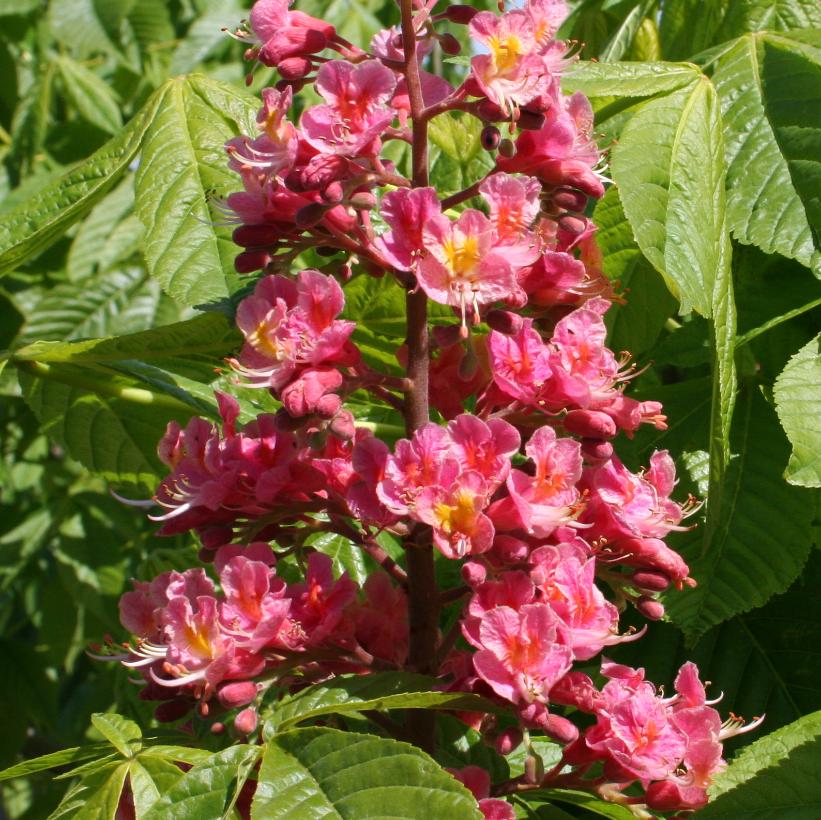
Aesculus x carnea 'Fort McNair' from Neil Vanderkruk Holdings Inc.
Aesculus x carnea 'Briotii'. The rarest species in the garden are A. chinensis, Chinese horsechestnut, which has yet to flower, and A. × carnea, red horsechestnut, which flowered consistently the past 10 years, although considered ill-suited to the southeast. The tree was planted in 2013 and is now 15 feet high and 12 feet wide.
FileAesculus x carnea PICT0370.JPG Wikimedia Commons
Aesculus Fort McNair. Red Horse chestnut. Showy spikes of dark pink flowers with yellow eyes emerge in spring. PH: 541-754-4224 PH: 800-223-8410 FAX: 541-754-6181 Home; Availability. Container Inventory - Excel;. Aesculus x carnea 'Fort McNair'.
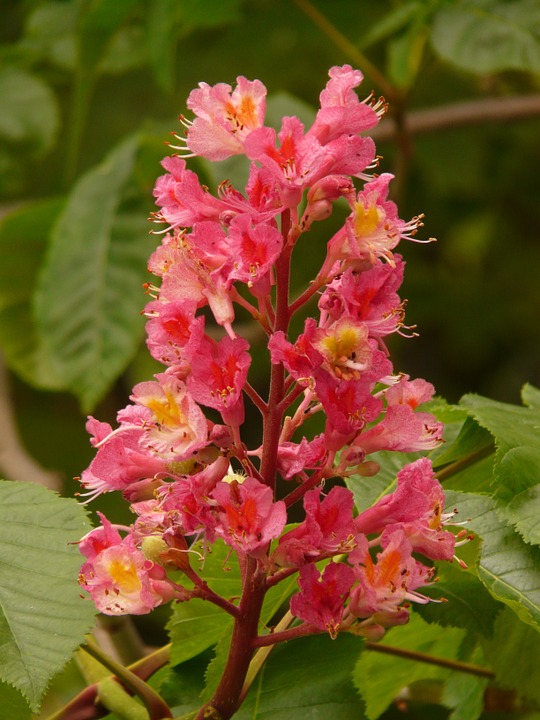
Aesculus X carnea Yougardener
Aesculus x carnea 'Fort McNair' Pronunciation: es-KU-lus KAR-nee-uh. SKU #00057. USDA Zone. 5-9. Your climate might be too cold for this plant:. (genus Aesculus) are ornamental and contain a toxin and should not be ingested. This Plant's Growing Zones: 5-9. Your USDA Cold Hardiness Zone: Your climate may be too cold for this plant. Change.
Opiniones de aesculus x carnea
Trees Over 20' Tall. Briotii Red Horse Chestnut (Aesculus x carnea) - 3 Gallon Pot. Adored by gardeners and hummingbirds for it spectacular floral display in late spring, the Briotii Red Horse Chestnut dazzles with abundant cone-shaped clusters of tricolor flowers in shades of red and pink with yellow throats.
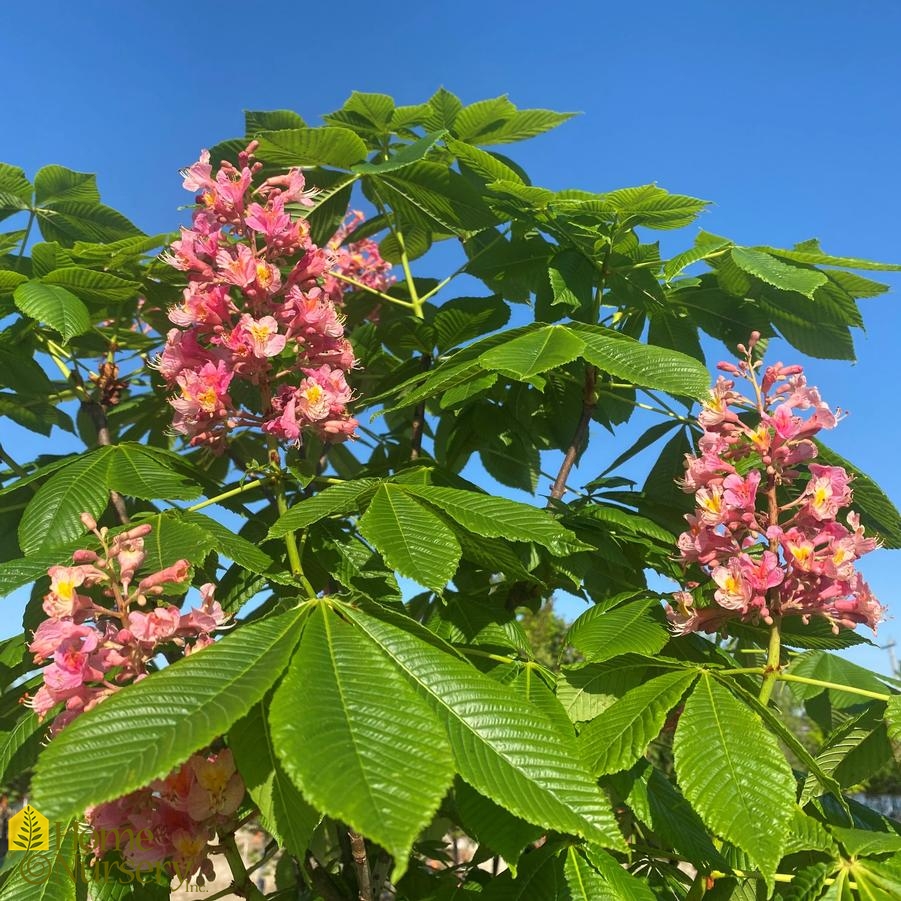
Aesculus x carnea 'Fort McNair' Red Horsechestnut from Home Nursery
Aesculus x carnea. Pink horse chestnut/buckeye. 12″ x 17″, 2015. My trudge to town takes me down a path lined with some majestic old catalpas, maples, stately oaks and a couple of younger horse chestnut trees. In the late spring the tips of the branches are covered with small pink flowers clustered in panicles, resembling a candelabra.